- WaveForm 0: Sine
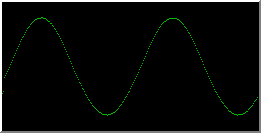
- WaveForm 1: Half-Sine
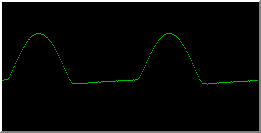
- WaveForm 2: Abs-Sine
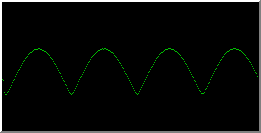
- WaveForm 3: Pulse-Sine
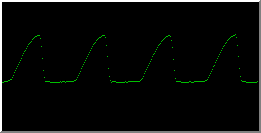
- WaveForm 4: Sine - even periods only
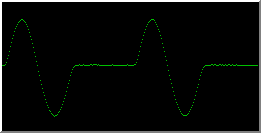
- WaveForm 5: Abs-Sine - even periods only
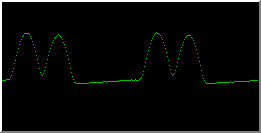
- WaveForm 6: Square
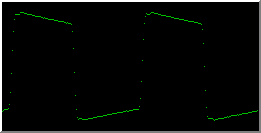
- WaveForm 7: Derived Square
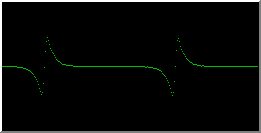
HTML Version 1.12 Last Updated Nov-23-2000
(based on plaintext Version 1.00 Nov-24-1994)
Written by Vladimir Arnost, QA-Software
e-mail: arnost@dcse.fee.vutbr.cz
This manual can be distributed freely if not modified.
I assume no responsibility for any damages arising out of use or inability to use this text. No warranty is provided about correctness of any information in this file. You are on your own.
The chip I am going to describe is getting more and more common, but programming information is still scarce, so I have decided to fill in this gap. All information contained in this file is a result of my experience in Adlib programming, research (read: reverse engineering) and finally of my effort to write down everything necessary to understand and use this piece of hardware. No official sources (i.e. development kits, books about this topic, etc.) were available to me except:
As far as I know, there are four major sound cards based on OPL3 chip:
Note: I assume some knowledge of FM music programming (mainly Adlib FM synthesizer) in this manual. If you are new to this topic I recommend you try Adlib first before going higher. Anyway, OPL3 is a direct descendant of OPL2 (what a surprise), so most features of OPL2 are also present on OPL3.
My card's user manual says: "[this card contains] ... a stereo music FM synthesizer with 20 channels consisting of four (4) operators each ... ". I thought: "Wow -- that's together eighty operators. This must be a GOOD sound-card." I was wrong. Just another advertising lie.
So let's clear some facts. First, OPL3 has only thirty-six (36) operators
which can be combined in several ways:
+------------+ | | | Operator 1 +--------+ | | | +------------+ | +--------> Output +------------+ | | | | | Operator 2 +--------+ | | +------------+
+------------+ +------------+ | | | | | Operator 1 +-------->| Operator 2 +--------> Output |(Modulator) | | (Carrier) | +------------+ +------------+
+-------+ +-------+ +-------+ +-------+ | | | | | | | | | Op. 1 +----->| Op. 2 +----->| Op. 3 +----->| Op. 4 +-----> Output | | | | | | | | +-------+ +-------+ +-------+ +-------+
+-------+ | | | Op. 1 +-----------------------------------+ | | | +-------+ | | +-------+ +-------+ +-------+ | | | | | | | | | Op. 2 +----->| Op. 3 +----->| Op. 4 +-----+-----> Output | | | | | | +-------+ +-------+ +-------+
+-------+ +-------+ | | | | | Op. 1 +----->| Op. 2 +-----+ | | | | | +-------+ +-------+ | +-----> Output +-------+ +-------+ | | | | | | | Op. 3 +----->| Op. 4 +-----+ | | | | +-------+ +-------+
+-------+ | | | Op. 1 +--------------------+ | | | +-------+ | | +-------+ +-------+ | | | | | | | Op. 2 +----->| Op. 3 +-----+-----> Output | | | | | +-------+ +-------+ | | +-------+ | | | | | Op. 4 +--------------------+ | | +-------+
Nice, aren't they?
The only way I think this can be written is a math formula.
Symbol + (plus) means additive synthesis, and * (asterisk) means
frequency modulation (Op1 * Op2 means operator 1 modulates
operator 2, not vice versa). Here they are:
|
(Op1 * Op2 * Op3 * Op4) ----> Output Op1 + (Op2 * Op3 * Op4) ----> Output (Op1 * Op2) + (Op3 * Op4) --> Output Op1 + (Op2 * Op3) + Op4 ----> Output |
Note 1: Actually, modes FM-AM and AM-AM are redundant, because they can be replaced by any pair of 2-OP channels operating at the same frequency.
In FM-AM mode, the operator assignment would be straightforward: (Op1, Op2) and (Op3, Op4), both running in FM mode.
In the case of AM-AM Mode, a small rearrangement of operators would be necessary: (Op1, Op4) in AM mode and (Op2, Op3) in FM mode.
Note 2: This document uses AM as a shorthand form of Additive Synthesis. Actually this is not any kind of modulation, just a simple addition of two signals. The AM shorthand was chosen as an "obvious" opposite of FM (as seen on your radio receiver). Please note that the OPL2/3 chips are unable to automatically perform any kind Amplitude Modulation other than tremolo effect.
In this mode 6 operators are used to produce five different percussion instruments:
Because these instruments occupy only three melodic channels, only Bass Drum, Snare Drum and Tom-Tom frequencies can be set. Cymbal and Hi-Hat frequencies are fixed.
This mode is identical with that of OPL2. For more details see ADLIB.DOC.
OPL3 may be found at the following addresses:
|
|
|
| 220h or 240h (selectable) and 388h |
Sound Blaster Pro II, 16, 32, AWE32/64 and Live, ESS 688, etc. |
| 388h | Adlib Gold, Windows Sound System |
| 388h ? | Pro Audio Spectrum Plus/16 (could anyone provide some more info?) |
The base address of the synthesizer will be called "base".
The chip occupies four I/O addresses:
| base+0 | Primary index register (write), Status register (read) |
| base+1 | Primary data register (write-only) |
| base+2 | Secondary index register (write) |
| base+3 | Secondary data register (write-only) |
The index registers are used to select internal registers and data registers are used to write to them. Status register returns the state of two timers built in the chip. OPL3 contains two sets of registers. The Primary set maps to channels 0-8 (operators 0-17) and the secondary maps to channels 9-17 (operators 18-35). The reason for this is simple: all these registers wouldn't fit into single register set.
Unlike Adlib (OPL2), OPL3 doesn't need delay between register writes. With OPL2 you had to wait 3.3 us after index register write and another 23 us after data register write. On the contrary OPL3 doesn't need (almost) any delay after index register write and only 0.28 us after data register write. This means you can neglect the delays and considerably speed up your music driver. But using reasonable delays will certainly do no harm.
The data registers can't be read (they are write-only) on both OPL2 and OPL3.
The registers are grouped in the same manner as in the OPL2 chip. Programs using both OPL2 and OPL3 chips may use the same code provided that their direct I/O interface is well written. The only thing you have to change is operator-to-register mapping, which must accomodate the fact that registers are spread between two register sets.
(The register map is nearly the same so I dared to copy it from ADLIB.DOC.)
Status Register (base+0):
| D7 | D6 | D5 | D4 | D3 | D2 | D1 | D0 |
|---|---|---|---|---|---|---|---|
| IRQFlag | T1Flag | T2Flag |
Empty fields are considered reserved and should not be used or relied upon their value.
Data Registers (base+1, base+3):
| Register | D7 | D6 | D5 | D4 | D3 | D2 | D1 | D0 |
|---|---|---|---|---|---|---|---|---|
| 01 | WSEnable | Test Register | ||||||
| 02 | Timer 1 Count (80 usec resolution) | |||||||
| 03 | Timer 2 Count (320 usec resolution) | |||||||
| 04* | IRQReset | T1 Mask | T2 Mask | T2 Start | T1 Start | |||
| 04** | 4-OP B-E | 4-OP A-D | 4-OP 9-C | 4-OP 2-5 | 4-OP 1-4 | 4-OP 0-3 | ||
| 05** | OPL3 | |||||||
| 08 | CSW | Note-Sel | ||||||
| 20-35 | Tremolo | Vibrato | Sustain | KSR | Frequency Multiplication Factor | |||
| 40-55 | Key Scale Level | Output Level (Attenuation) | ||||||
| 60-75 | Attack Rate | Decay Rate | ||||||
| 80-95 | Sustain Level | Release Rate | ||||||
| A0-A8 | Frequency Number (Lower 8 bits) | |||||||
| B0-B8 | Key-On | Block Number | F-Number (high bits) | |||||
| BD | Trem Dep | Vibr Dep | PercMode | BD On | SD On | TT On | CY On | HH On |
| C0-C8 | Right | Left | FeedBack Modulation Factor | SynthType | ||||
| E0-F5 | Waveform Select | |||||||
| Notes: | |
| * | This register exists only at port base+1 |
| ** | This register exists only at port base+3 |
For register bases A0, B0 and C0 there is one register per output channel. The primary register set holds the first nine channels (0-8) and the secondary holds last nine channels (9-17).
For bases 20, 40, 60, 80 and E0 there are two registers per channel. Each register maps to one operator. Unfortunately the operator's register numbers are not continuous. The following table shows which operator maps to which register set and offset (in hex).
| Op. | Set/Offset | Op. | Set/Offset |
|---|---|---|---|
| 0 | 0/00 | 18 | 1/00 |
| 1 | 0/01 | 19 | 1/01 |
| 2 | 0/02 | 20 | 1/02 |
| 3 | 0/03 | 21 | 1/03 |
| 4 | 0/04 | 22 | 1/04 |
| 5 | 0/05 | 23 | 1/05 |
| 6 | 0/08 | 24 | 1/08 |
| 7 | 0/09 | 25 | 1/09 |
| 8 | 0/0A | 26 | 1/0A |
| 9 | 0/0B | 27 | 1/0B |
| 10 | 0/0C | 28 | 1/0C |
| 11 | 0/0D | 29 | 1/0D |
| 12 | 0/10 | 30 | 1/10 |
| 13 | 0/11 | 31 | 1/11 |
| 14 | 0/12 | 32 | 1/12 |
| 15 | 0/13 | 33 | 1/13 |
| 16 | 0/14 | 34 | 1/14 |
| 17 | 0/15 | 35 | 1/15 |
The following tables summarize which operators form a channel in various modes:
+------------+--------------------------------------------------------------+ | Channel | 0 1 2 3 4 5 6 7 8 9 10 11 12 13 14 15 16 17 | +------------+--------------------------------------------------------------+ | Operator 1 | 0 1 2 6 7 8 12 13 14 18 19 20 24 25 26 30 31 32 | | Operator 2 | 3 4 5 9 10 11 15 16 17 21 22 23 27 28 29 33 34 35 | +------------+--------------------------------------------------------------+
+------------+--------------------------------------------------------------+ | Channel | 0 1 2 3 4 5 BD SD TT CY HH 9 10 11 12 13 14 15 16 17 | +------------+--------------------------------------------------------------+ | Operator 1 | 0 1 2 6 7 8 12 16 14 17 13 18 19 20 24 25 26 30 31 32 | | Operator 2 | 3 4 5 9 10 11 15 21 22 23 27 28 29 33 34 35 | +------------+--------------------------------------------------------------+
+------------+---------------------------------------------------+ | Channel | 0 1 2 6 7 8 9 10 11 15 16 17 | +------------+---------------------------------------------------+ | Operator 1 | 0 1 2 12 13 14 18 19 20 30 31 32 | | Operator 2 | 3 4 5 15 16 17 21 22 23 33 34 35 | | Operator 3 | 6 7 8 24 25 26 | | Operator 4 | 9 10 11 27 28 29 | +------------+---------------------------------------------------+
Channels 3, 4, 5 and 12, 13, 14 can't be used separately because their operators became part of channels 0, 1, 2 and 9, 10, 11 respectively. For instance a four-operator channel 1 consists of two two-operator channels number 1 and 4. (The second 2-OP channel number is always the first 2-OP channel number plus three.)
OPL3 allows you to enable/disable 4-OP mode separately for any of channels 0, 1, 2, 9, 10 and 11 (see register 104h in the reference below). This means for instance when you switch only channel 2 into 4-OP mode, channels number 0, 1, 3, 4, 6, 7, 8, 9, etc. will be still independent 2-OP channels.
Channels 6, 7, 8 and 15, 16, 17 are always two-operator ones. They can't be grouped to form four-operator channels.
+------------+--------------------------------------------------------+ | Channel | 0 1 2 BD SD TT CY HH 9 10 11 15 16 17 | +------------+--------------------------------------------------------+ | Operator 1 | 0 1 2 12 16 14 17 13 18 19 20 30 31 32 | | Operator 2 | 3 4 5 15 21 22 23 33 34 35 | | Operator 3 | 6 7 8 24 25 26 | | Operator 4 | 9 10 11 27 28 29 | +------------+--------------------------------------------------------+
12A - Operator 1 - Tremolo/Vibrato/Sustain/KSR/Multiplication 12D - Operator 2 - Tremolo/Vibrato/Sustain/KSR/Multiplication 14A - Operator 1 - Key Scale Level/Output Level 14D - Operator 2 - Key Scale Level/Output Level 16A - Operator 1 - Attack Rate/Decay Rate 16D - Operator 2 - Attack Rate/Decay Rate 18A - Operator 1 - Sustain Level/Release Rate 18D - Operator 2 - Sustain Level/Release Rate 1A5 - Frequency Number (low) 1B5 - Key On/Block Number/Frequency Number (high) 1C5 - FeedBack/Synthesis Type 1EA - Operator 1 - Waveform Select 1ED - Operator 2 - Waveform Select
104 - bit 1 = 1 - Enable Four-Operator Synthesis in channel #1 21 - Operator 1 - Tremolo/Vibrato/Sustain/KSR/Multiplication 24 - Operator 2 - Tremolo/Vibrato/Sustain/KSR/Multiplication 29 - Operator 3 - Tremolo/Vibrato/Sustain/KSR/Multiplication 2C - Operator 4 - Tremolo/Vibrato/Sustain/KSR/Multiplication 41 - Operator 1 - Key Scale Level/Output Level 44 - Operator 2 - Key Scale Level/Output Level 49 - Operator 3 - Key Scale Level/Output Level 4C - Operator 4 - Key Scale Level/Output Level 61 - Operator 1 - Attack Rate/Decay Rate 64 - Operator 2 - Attack Rate/Decay Rate 69 - Operator 3 - Attack Rate/Decay Rate 6C - Operator 4 - Attack Rate/Decay Rate 81 - Operator 1 - Sustain Level/Release Rate 84 - Operator 2 - Sustain Level/Release Rate 89 - Operator 3 - Sustain Level/Release Rate 8C - Operator 4 - Sustain Level/Release Rate A1 - Frequency Number (low) A4 - Unused B1 - Key On/Block Number/Frequency Number (high) B4 - Unused C1 - FeedBack/Synthesis Type (part 1) C4 - Synthesis Type (part 2) E1 - Operator 1 - Waveform Select E4 - Operator 2 - Waveform Select E9 - Operator 3 - Waveform Select EC - Operator 4 - Waveform Select
Note: If a register number is greater than 100h, then it belongs into the secondary register set. (I use this numbering to emphasize the fact that the particular register MUST be written to the secondary set.) See Appendix A.
Because the registers of OPL3 are almost the same as of OPL2, I have copied their descriptions from file ADLIB.DOC.
+-7-+-6-+-5-+-4-+-3-+-2-+-1-+-0-+ |IRQ|T1 |T2 | Not used | +---+---+---+---+---+---+---+---+bit 7: IRQ Flag. Set whenever any timer has elapsed.
Timer interrupts are not wired to any IRQ (why??). The timers can be used to detect the OPL2/OPL3 chip (see Appendix B).
+-7-+-6-+-5-+-4-+-3-+-2-+-1-+-0-+ | |WSE| Test Register | +---+---+---+---+---+---+---+---+bit 5: Waveform Select Enable. If clear, all channels will use normal sine wave. If set, register E0-F5 (Waveform Select) contents will be used.
Upward 8 bit counter with a resolution of 80 usec. If an overflow occurs, the status register bit is set, and the preset value is loaded into the timer again.
Same as Timer 1, but with a resolution of 320 usec.
+-7-+-6-+-5-+-4-+-3-+-2-+-1-+-0-+ |Rst|T1M|T2M| |T2S|T1S| +---+---+---+---+---+---+---+---+bit 7: IRQ-Reset. Resets timer and IRQ flags in status register. All other bits are ignored when this bit is set.
+-7-+-6-+-5-+-4-+-3-+-2-+-1-+-0-+ | |ChB|ChA|Ch9|Ch2|Ch1|Ch0| +---+---+---+---+---+---+---+---+bit 5: Enable four-operator synthesis for channel pair 11 - 14 (decimal).
If reset to zero, OPL3 can produce 18 two-operator sounds at a
time.
If nonzero, OPL3 produces four-operator sound in appropriate channel pair.
+-7-+-6-+-5-+-4-+-3-+-2-+-1-+-0-+ | |OPL| +---+---+---+---+---+---+---+---+bit 0: OPL3 Mode Enable. When set, OPL3 extensions (36 operators, 4-OP synthesis, 8 waveforms, stereo output) can be used. When reset, the chip behaves as an ordinary OPL2. This bit is zero by default for compatibility with OPL2.
+-7-+-6-+-5-+-4-+-3-+-2-+-1-+-0-+ |CSW|N-S| | +---+---+---+---+---+---+---+---+bit 7: Composite sine wave mode on/off. All KEY-ON bits must be clear in order to use this mode. The card is unable to create any other sound when in CSW mode. (Unfortunately, I have no info how to use this mode :-< ).
+-7-+-6-+-5-+-4-+-3-+-2-+-1-+-0-+ |Tre|Vib|Sus|KSR| Multiplication| +---+---+---+---+---+---+---+---+bit 7: Tremolo (Amplitude vibrato) on/off.
+-------+--------+ | MULTI | Factor | +-------+--------+ | 0 | 1/2 | | 1 | 1 | | 2 | 2 | | 3 | 3 | | 4 | 4 | | 5 | 5 | | 6 | 6 | | 7 | 7 | | 8 | 8 | | 9 | 9 | | 10 | 10 | | 11 | 10 | | 12 | 12 | | 13 | 12 | | 14 | 15 | | 15 | 15 | +-------+--------+
+-7-+-6-+-5-+-4-+-3-+-2-+-1-+-0-+ | KSL | Output Level | +---+---+---+---+---+---+---+---+bits 6-7: Key Scale Level. Attenuates output level towards higher pitch:
+-----+-------------+ | KSL | Attenuation | +-----+-------------+ | 0 | - | | 1 | 1.5 dB/oct | | 2 | 3.0 dB/oct | | 3 | 6.0 dB/oct | +-----+-------------+bits 0-5: Output Level. Attenuates the operator output level. 0 is the loudest, 3F is the softest. In additive synthesis, varying the output level of any operator varies the volume of its corresponding channel. In FM synthesis, varying the output level of the carrier varies the volume of the channel. Varying the output of the modulator will change the frequency spectrum produced by the carrier.
+-------+------+------+------+------+ | Mode | Op 1 | Op 2 | Op 3 | Op 4 | +-------+------+------+------+------+ | AM | + | + | N/A | N/A | | FM | - | + | N/A | N/A | | FM-FM | - | - | - | + | | AM-FM | + | - | - | + | | FM-AM | - | + | - | + | | AM-AM | + | - | + | + | +-------+------+------+------+------+
+-7-+-6-+-5-+-4-+-3-+-2-+-1-+-0-+ | Attack Rate | Decay Rate | +---+---+---+---+---+---+---+---+bits 4-7: Attack Rate. Determines the rising time for the sound. The higher the value, the faster the attack.
+-7-+-6-+-5-+-4-+-3-+-2-+-1-+-0-+ | Sustain Level | Release Rate | +---+---+---+---+---+---+---+---+bits 4-7: Sustain Level. Determines the point at which the sound ceases to decay and chages to a sound having a constant level. The sustain level is expressed as a fraction of the maximum level. 0 is the softest and F is the loudest sustain level. Note that the Sustain-bit in the register 20-35 must be set for this to have an effect.
+-7-+-6-+-5-+-4-+-3-+-2-+-1-+-0-+ | |KEY| Block Num.| Freq | +---+---+---+---+---+---+---+---+bit 5: KEY-ON. When 1, channel output is enabled.
F-Number = Music Frequency * 2^(20-Block) / 49716 Hz
Note: In four-operator mode only the register value of Operators 1 and 2 is used, value of Operators 3 and 4 in this register is ignored. In other words: one channel uses only one frequency, block and KEY-ON value at a time, regardless whether it is a two- or four-operator channel.
+-7-+-6-+-5-+-4-+-3-+-2-+-1-+-0-+ |Tre|Vib|Per|BD |SD |TT |CY |HH | +---+---+---+---+---+---+---+---+bit 7: Tremolo (Amplitude Vibrato) Depth. 0 = 1.0dB, 1 = 4.8dB.
+-7-+-6-+-5-+-4-+-3-+-2-+-1-+-0-+ | | R | L | FeedBack |Syn| +---+---+---+---+---+---+---+---+bit 5: Right Speaker Enable. When set, channel output goes to right speaker.
+----------+--------+ | FeedBack | Factor | +----------+--------+ | 0 | 0 | | 1 | n/16 | | 2 | n/8 | | 3 | n/4 | | 4 | n/2 | | 5 | n | | 6 | 2.n | | 7 | 4.n | +----------+--------+When in four-operator mode, the FeedBack value is used only by Operator 1, value of Operators 2, 3 and 4 is ignored.
+--------+--------+--------+ | Op 1&2 | Op 3&4 | Type | +--------+--------+--------+ | 0 | NONE | FM | | 1 | NONE | AM | | 0 | 0 | FM-FM | | 1 | 0 | AM-FM | | 0 | 1 | FM-AM | | 1 | 1 | AM-AM | +--------+--------+--------+
+-7-+-6-+-5-+-4-+-3-+-2-+-1-+-0-+ | | WaveForm | +---+---+---+---+---+---+---+---+
bits 0-2: WaveForm Select (WS):
|
|
Note: Bit 5 of register 01 must be set to use waveforms other than sine. Waveforms 4-7 are available only on OPL3.
These examples show a few working routines used in my MUS Player. They are written in Borland C++ 3.1 but should be easy to translate to any other language.
--------------------------------- cut here ---------------------------------
// I prefer using these Assembler-like types
typedef unsigned int WORD;
typedef unsigned char BYTE;
/*
* FM Synthesizer base port. SB Pro II - 0x220, Adlib 0x388
*/
WORD FMport = 0x220;
/*
* Enables OPL3 extensions.
*/
WORD OPL3 = 1;
/*
* Direct write to any Adlib/SB Pro II FM synthetiser register.
* reg - register number (range 0x001-0x0F5 and 0x101-0x1F5). When high byte
* of reg is zero, data go to port FMport, otherwise to FMport+2
* data - register value to be written
*/
BYTE FMwriteReg(WORD reg, BYTE data)
{
asm {
mov dx,FMport
mov ax,reg
or ah,ah // high byte is nonzero -- write to port base+2
jz out1
inc dx
inc dx
}
out1: asm {
out dx,al
mov cx,6
}
loop1:asm { // delay between writes
in al,dx
loop loop1
inc dx
mov al,data
out dx,al
dec dx
mov cx,36
}
loop2:asm { // delay after data write
in al,dx
loop loop2
}
return _AL;
}
/*
* Write to an operator pair. To be used for register bases of 0x20, 0x40,
* 0x60, 0x80 and 0xE0.
*/
void FMwriteChannel(BYTE regbase, BYTE channel, BYTE data1, BYTE data2)
{
static BYTE adlib_op[] = {0, 1, 2, 8, 9, 10, 16, 17, 18};
static BYTE sbpro_op[] = { 0, 1, 2, 6, 7, 8, 12, 13, 14,
18, 19, 20, 24, 25, 26, 30, 31, 32};
static WORD rg[] = {0x000,0x001,0x002,0x003,0x004,0x005,
0x008,0x009,0x00A,0x00B,0x00C,0x00D,
0x010,0x011,0x012,0x013,0x014,0x015,
0x100,0x101,0x102,0x103,0x104,0x105,
0x108,0x109,0x10A,0x10B,0x10C,0x10D,
0x110,0x111,0x112,0x113,0x114,0x115};
if (OPL3)
{
register WORD reg = sbpro_op[channel];
FMwriteReg(rg[reg]+regbase, data1);
FMwriteReg(rg[reg+3]+regbase, data2);
} else {
register WORD reg = regbase+adlib_op[channel];
FMwriteReg(reg, data1);
FMwriteReg(reg+3, data2);
}
}
/*
* Write to channel a single value. To be used for register bases of
* 0xA0, 0xB0 and 0xC0.
*/
void FMwriteValue(BYTE regbase, BYTE channel, BYTE value)
{
static WORD ch[] = {0x000,0x001,0x002,0x003,0x004,0x005,0x006,0x007,0x008,
0x100,0x101,0x102,0x103,0x104,0x105,0x106,0x107,0x108};
register WORD chan;
if (OPL3)
chan = ch[channel];
else
chan = channel;
FMwriteReg(regbase + chan, value);
}
--------------------------------- cut here ---------------------------------
An official method of Adlib (OPL2) detection is:
Notes:
Another possible detection method for distinguishing between SB Pro I and SB Pro II would be to try to detect OPL2 at I/O port base+0 and then at port base+2. The first test should succeed and the second should fail if OPL3 is present. (Remember: SB Pro I contains twin OPL2 chips at addresses base+0 and base+2, while SB Pro II contains one OPL3 chip at I/O address base+0 thru base+3).
Perhaps the most recommended "detection" method. Reading this variable avoids blindfold I/O port scanning and possible device conflicts. The user is responsible for its proper setting.
The variable has this format:
A: Base I/O address given in hex. For most Sound Blasters the default is 220.
I: IRQ Number (decimal). Default 7 (old SB and SB Pro), 5 (SB 16, etc.).
D: DMA Number (decimal). Default 1.
H: High DMA Number (decimal). Default 5 (on SB 16 and newer cards only)
P: MPU-401 MIDI port (hexadecimal). Default 330 (on SB 16 and newer cards)
E: EMU-8000 base port (hexadecimal). Default 620 (on AWE32 and newer cards)
T: Card Type (decimal):
Examples:
Title: The PC Games Programmers Encyclopedia Authors: Mark Feldman and many others on Usenet and Internet WWW: http://www.qzx.com/pc-gpe/ FTP: ftp://x2ftp.oulu.fi/pub/msdos/programming/gpe/pcgpe10.zip - 700KB... you can find (almost) everything you need there
Title: Sound Blaster - The Official Book Authors: Richard Heimlich, David M. Golden, Ivan Luk, Peter M. Ridge Publishers: Osborne/McGraw Hill ISBN: 0-07-881907-5... this is a number-one in my book-wishlist. If anyone wanted to get rid of the book, I wouldn't scorn it ... :-)
Title: The SoundBlaster Developer Kit Publishers: Creative Labs Inc Creative Technology PTE LTD... I wonder if you can find something comprehensible in that.
 Back to previous page.
Back to previous page.
© 1996-2000 Vladimir Arnost
Last modified on
19. January 2009
If you have any suggestions, bug reports or ideas how to improve these
pages, please feel free to
mail me.